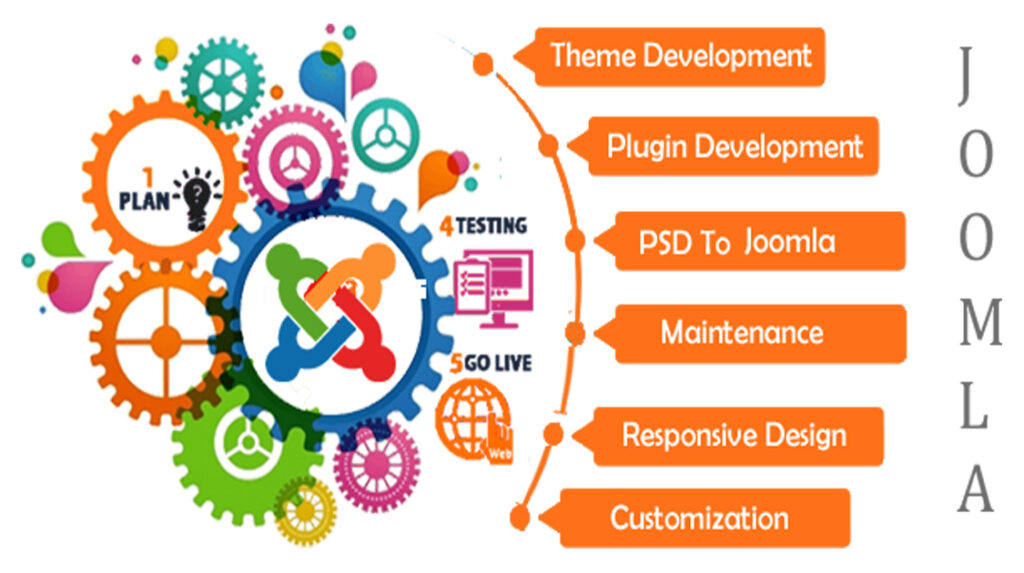
Joomla is a popular open-source content management system (CMS) that enables you to build and manage websites and online applications. It offers a wide range of features, flexibility, and a user-friendly interface.
Here’s an overview of Joomla development:
- Installation and Setup: Start by downloading the latest version of Joomla from the official website. Install Joomla on your web hosting server following the provided installation instructions. Configure the basic settings, such as the site name, database credentials, and administrator account details.
- Website Configuration: Access the Joomla administration panel and configure the website settings. Customize the site’s title, description, logo, and other global settings. Define the site’s language, time zone, and SEO-related settings to optimize its visibility and search engine rankings.
- Template Selection and Customization: Choose a Joomla template that aligns with your website’s design and functionality requirements. Joomla offers a variety of free and premium templates that you can customize to suit your brand. Modify the template’s layout, colors, typography, and other elements to create a unique look and feel for your website.
- Content Creation and Management: Create and manage your website’s content using Joomla’s content management features. Joomla allows you to organize content into categories and create articles with text, images, and multimedia elements. Utilize the WYSIWYG (What You See Is What You Get) editor to format and style your content easily.
- Extension Integration: Enhance the functionality of your Joomla website by integrating extensions. Joomla has a vast extensions directory offering various features such as e-commerce, social media integration, forms, SEO optimization, security, and more. Install and configure the desired extensions to extend your website’s capabilities.
- Custom Development: If the available extensions do not meet your specific requirements, you can develop custom extensions or modules. Joomla follows the Model-View-Controller (MVC) architecture, allowing you to create custom functionalities by coding in PHP and utilizing Joomla’s API and framework. Custom development may require programming skills or the assistance of a developer.
- User Management: Set up user registration and management features to control access and permissions on your Joomla website. Define user groups and assign different levels of access to content and functionality. Implement user authentication, password recovery, and user profile management features.
- Search Engine Optimization (SEO): Optimize your Joomla website for search engines to improve its visibility and organic traffic. Utilize Joomla’s built-in SEO features, such as friendly URLs, meta tags, and canonical URLs. Focus on creating high-quality, keyword-rich content and optimize site speed and mobile responsiveness.
- Security and Backup: Implement security measures to protect your Joomla website from vulnerabilities. Keep Joomla core and extensions up to date with the latest security patches. Utilize security extensions, configure user permissions, and implement secure protocols like SSL certificates. Regularly back up your website’s data and files to ensure data protection.
- Maintenance and Updates: Regularly maintain and update your Joomla website to ensure its security, performance, and functionality. Monitor website analytics, review and update content, address technical issues, and ensure compatibility with the latest Joomla version. Stay up to date with Joomla news and updates to leverage new features and improvements.
Joomla provides a versatile platform for website development, catering to various needs and requirements. By utilizing its features, extensions, and customization options, you can create and manage a dynamic and user-friendly website or online application.